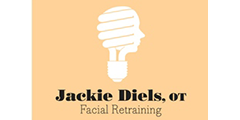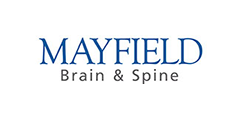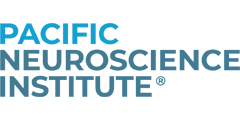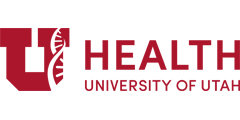A Tale of Two Acoustic Neuromas
Celeste and David Ventners
This is a story of not one, but two acoustic neuroma experiences. What is unique about this story is that the two subjects happen to be married.
Celeste’s story:
For years I had been experiencing terrible headaches that had gotten worse. I also experienced dizziness when I turned my head quickly and had a major hearing loss in my right ear. In the mid-1990’s my primary physician sent me to an ENT who diagnosed the hearing loss as being age-related. I soldiered on, putting my medical issues aside because I didn’t have time to pursue answers. While I worked full-time during the day, I pursued a college degree at night. At last, I graduated in 1999 at age 52. Once I was finished with school, I decided it was time to address my medical problems.
A CT scan showed a 3.5 x 3 cm mass, confirmed by an MRI. I was told I had a large, benign brain tumor and would have to have surgery immediately. I was definitely scared and did not know where to turn for answers. Nobody “Googled” anything back then. All I heard was “brain surgery”. We didn’t even know what questions to ask. My husband and I gathered our sons and daughters-in-law to give them the grave news. I called my mother and siblings thinking I might never see them again. I was on a lot of prayer lists, which gave me great peace of mind.
Two weeks later, I put my full trust in my neurosurgeon. There was no talk of what type of surgery to have or different approaches. My surgeon opened me up from behind the ear where he found a 4 cm AN and after hours of surgery, I was 90% AN free. But I had not escaped unscathed. Although my facial nerve had been constantly monitored during surgery, I had facial paralysis. I was totally deaf in my right ear. I had no balance. I listed to the right side and needed someone to hold me up. I could not focus my eyes properly to watch TV or read, and my right eye drooped so I could not close it.
After discharge from the hospital, I began intense physical and occupational therapy. I had to retrain my brain so I could walk unattended and write. I had a gold weight implanted in my right eyelid and I underwent physical therapy for my facial nerve. My vision did eventually return somewhat to normal.
After four months, I was able to return to work but I still had to be careful when I walked, consciously adjusting for different surfaces under my feet. At this time, my facial paralysis was very evident. My main concern was that my first grandchild was about to be born and I would never be able to smile at him. I went into a deep depression which lingered for about three months. Finally, I realized that I had a lot of things to be grateful for, and my depression lifted. I retired two years after surgery and became involved in volunteer work which I loved.
My physical condition has improved since then but is not perfect. Besides deafness of my right ear and tinnitus, I still have balance challenges. The right side of my mouth does not close properly. The facial paralysis eventually lessened, but with a cruel twist: synkinesis resulted. This means that when I move my mouth, my right eye closes. This has produced some funny moments. I find that when I smile at people my right eye closes. Often times they think I am winking at them. So naturally, they return the wink. I still avoid mirrors and prefer group pictures. However, I have never shied away from people and I have no trouble getting up in front of a group.
David’s story:
In January 2014, at age 65, I experienced a bad case of vertigo and nausea. I went to the emergency room where a diagnosis of an acoustic neuroma was made, confirmed later by an MRI. Prior to my diagnosis, I had complained of fullness in my left ear. Usually, after taking an antihistamine, the fullness would go away for a while but always returned. My wife kept telling me that I seemed to be losing some of my hearing. I scoffed at the idea. As a retired Air Traffic Controller with thirty-five years on a job that required me to wear a headset, I could blame my lack of hearing on that - if I were to admit to a hearing problem at all. Post-retirement I had begun teaching high school. A few months before my diagnosis, I noticed my students always wanting to sit to my left. Later when I quizzed them about this they told me that if they sat on my left side I would not hear them talk to each other. Smart kids! But - I still would not admit to a hearing problem.
After my diagnosis, I researched AN online and found the ANA Support Group in Jacksonville, Florida. I called Joan Vanderbilt, the Support Group Leader at that time. When I explained that I had just been diagnosed, she commented on how calm I sounded about the whole thing. I explained that we had already been through this when my wife was diagnosed in 2000. What a difference being familiar with the diagnosis made on how I approached my own. I knew that it was not a life-threatening issue. My tumor was smaller than Celeste’s 1.3 cm. I had options and time to review them all. I was told that I could wait and see, have radiation treatments, or have surgery.
However, the only person I knew who had an AN was Celeste. Her journey was very complicated with residual problems. That is why our first ANA meeting was so crucial. Wow! It was great, helpful beyond our expectations. What a blessing it was to see that Celeste was not the norm post-surgery. I breathed a big sigh of relief and decided to have the tumor removed.
In August 2014, Dr. Charles Greene, my otolaryngologist, and Dr. Hanel, my neurosurgeon, performed the surgery, using the translabyrinthine approach. The operation was a complete success. I did not have any facial issues or major balance problems. I did not require any physical therapy. I did lose my hearing in my left ear, experience tinnitus, and when I am tired my left eye droops a bit. I was able to go right back to teaching. After informing my students of the surgery, I was quick to tell them that no one would be sitting on my left side anymore.
Our story:
So, what are the odds that husband and wife would have the same diagnosis? How is it possible that it would strike twice in the same household? We have definitely kept our sense of humor about our unique situation, which is key. We find that if we are at any type of gathering, we make it a point to sit next to each other, deaf ear to deaf ear, so we can hear the people with our good ear. Then, when we get home we tell each other what the other may have missed.
Tremendous strides in acoustic neuroma treatment have been made in the fourteen years between the two diagnoses. There are more treatment options. There is much more information and support available now. We attend ANA Support Group meetings. Having gone through this experience twice, once without ANA and once with, we know how important it is to share with those who are facing decisions about treatment. Not knowing about ANA when Celeste was diagnosed, we are empathetic to those who are newly diagnosed. We also know that we are on opposite ends of the AN experience. At the meetings, people can see how different the outcomes of the surgery can be by virtue of how different ANs can be. There is not a “normal” outcome of any treatment. You just learn to adjust to a new normal. The world does not end with AN, and life goes on.






























